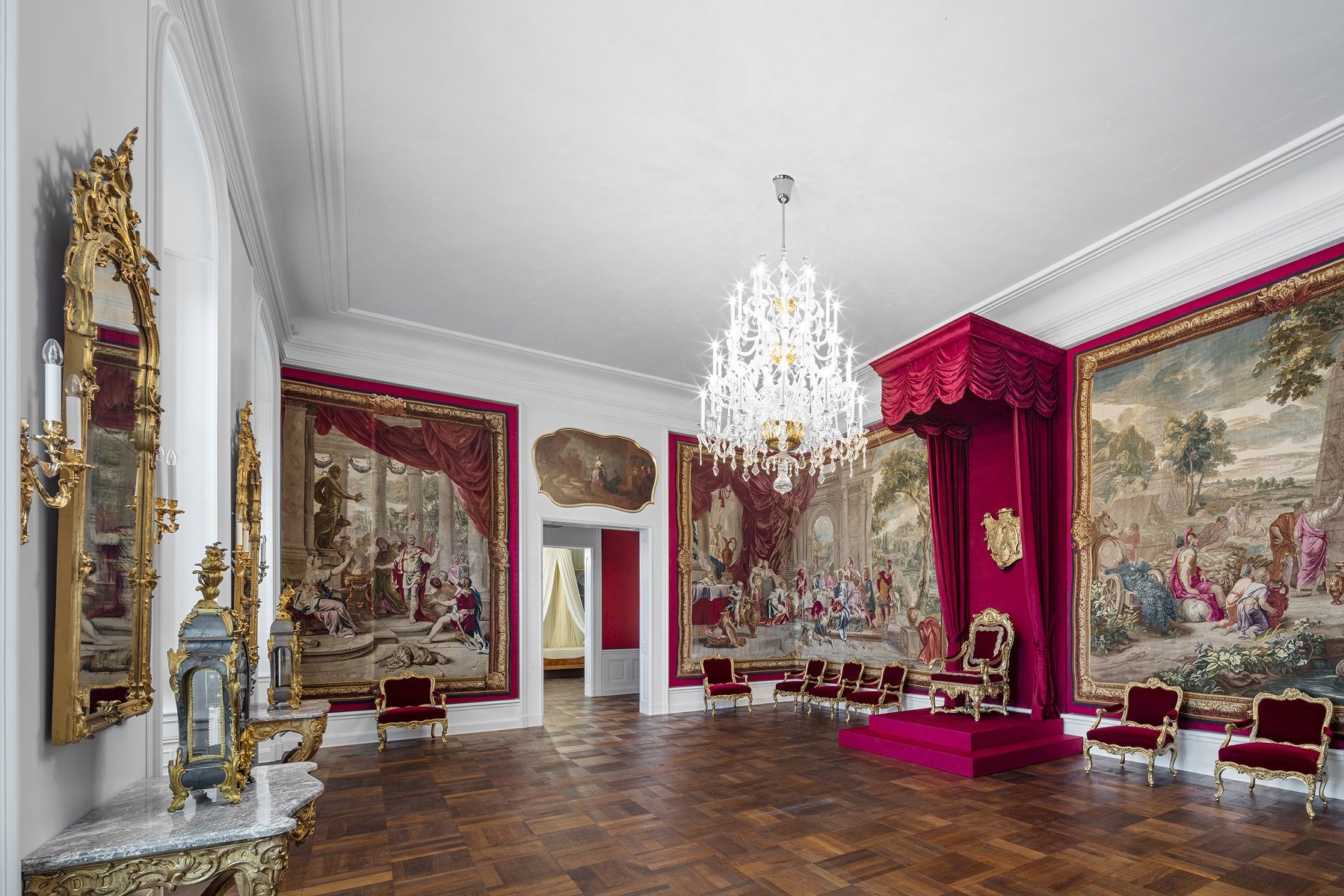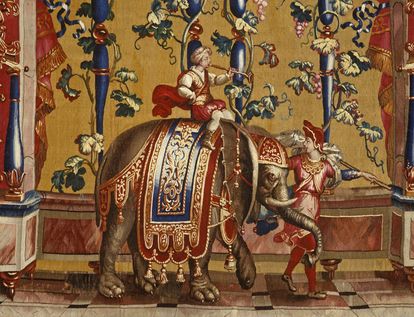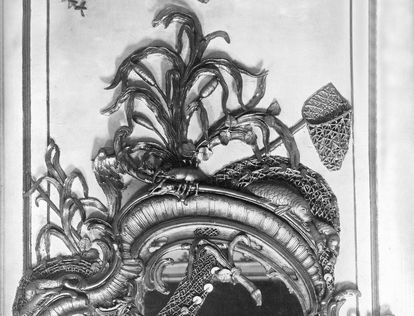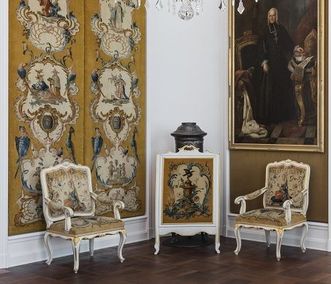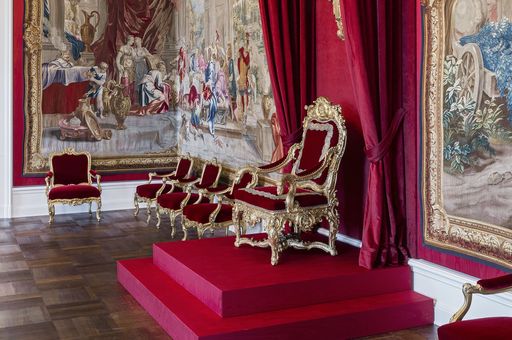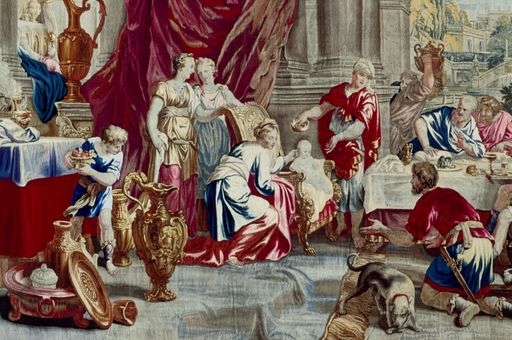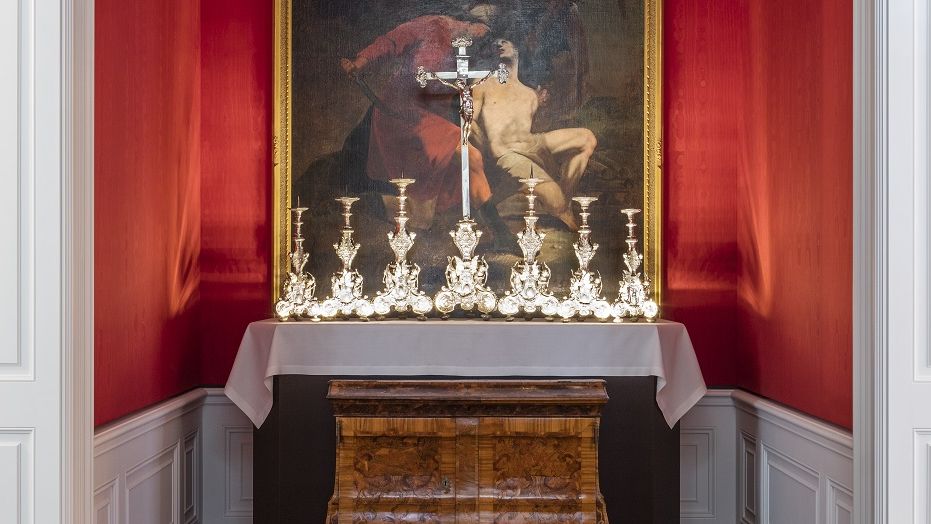Hunting Room
The Hunting Room was both an antechamber and a dining hall. Here, visitors and supplicants waited for an audience with the prince-bishop. Stucco and wood carving that depicts motifs of hunting and fishing gave the room its name. Today, four small paintings on the theme of hunting commemorate the former furnishings. The walls are also decorated with tapestries from the "Grotesque series" created between 1685 and 1719. On some tapestries, dancers, musicians, and an elephant driver can be seen.



